Raising the iQue of my home
Tags: console nintendo ique pickups
When Nintendo wanted to enter the burgeoning Chinese market in 2003, they did so with a neat redesigned Nintendo 64 in a single joypad. Unfortunately, they didn’t sell a lot of them (eight to twelve thousand units, depending who you ask). This makes it an interesting and uncommon artifact from Nintendo history. I won one on YouTube. Here it is! Let’s play some games.
The YouTube channel where I won my iQue from is re-enthused, which is essentially the exact same kind of weird-Japanese-computer content you get here, but in video form. Obviously, I’m biased - they sent me a free Nintendo - but there’s plenty of good stuff to see there that I definitely don’t have.
The iQue chipset is not a direct copy of the N64, as far as I can tell. iQue - the company - was founded by Wei Yen, one of the engineers responsible for the original N64 and GameCube chipsets (as well as OpenGL when he was at SGI.) Based on the hype on the box talking about pixel shaders, I’m guessing it’s semi-custom silicon that emulates the N64’s weirder texture modes using a programmable pipeline, but it’s hard to find concrete answers, between the usual Nintendo veil of secrecy and the language barrier.
For some reason, not a lot of people have imported iQues and documented them on the internet. If they had, you probably wouldn’t be reading this entry. With the dream of bettering humanity always in my heart, I set upon this solemn research task.
I didn’t know what game was on it, but I sure hoped it was Animal Crossing.
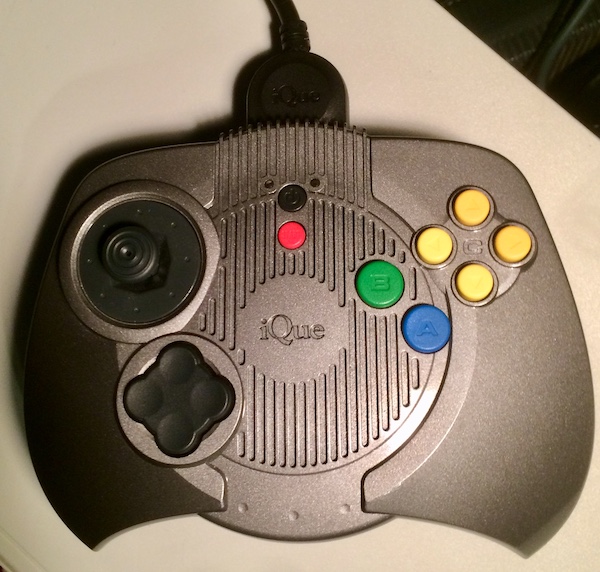
I started unpacking it. There are twist ties on some of the cables and the power supply is still boxed. It even still has the warranty card. I wonder if this iQue has ever been used, or if it is part of some exotic dead stock reselling chain that has terminated (at least for the time being) with me.
Unfortunately, the power supply won’t work for me. In China, their predominant wall voltage is 220V, but in Canada - like the US - it is a mere 120V, not even enough to fry a toddler. Maybe stun them a little if you hose them down first.
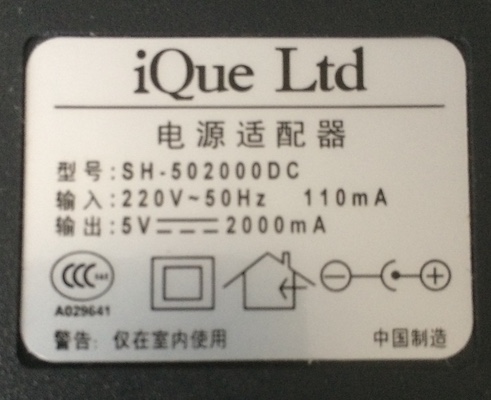
It only needs a 5V rail. This is a pretty interesting change from the North American Nintendo 64, which takes from its power brick two rails of 3.3V @ 2.7A each, and one rail of 12V @ 0.8A. Simplifying the input voltage like this so that you can just use a wall-wart was most likely made possible by the integration of all that cutting-edge N64 hardware into a small system-on-chip (SoC).
All of the connectors for the iQue come out of this giant squid-like cable. To iQue/Nintendo’s credit, the cable is pretty lightweight and doesn’t seem like it would get in the way of game playing.
Getting a pinout wasn’t super easy - the pins are recessed pretty far, probably to keep kids from getting shocked or sticking stuff into the shield. For the sake of preservation, I spent about an hour working up a jig and then buzzing out all the pins. This is definitely not a connector I’ve seen before - could be custom, but I didn’t look into it very far.
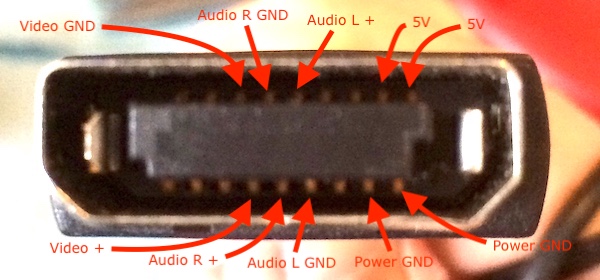
Even though there are 18 pins on the back of the iQue, only four connectors come out of the device:
- Female barrel plug for 5V power input;
- Yellow RCA connector for composite video;
- White and red RCA connectors for stereo RCA audio.
I’m not sure what the remaining pins would be for. One obvious answer would be a multitap, so that more than one controller can play.
There is also a mini-USB port on the back of the iQue. I assume this USB port is solely for putting games onto the device from the stores that sold them or your home computer, because the USB standard doesn’t let you deliver the two amps needed to run this rather thirsty little machine.
I dug through my pile of stuff and eventually came up with a D-Link router power adapter that provided 5V at 2.5A, centre-positive. And the jack was a perfect fit! I immediately ignored other obligations in order to fire up my Chinese Nintendo. It’s not just a good idea, it’s the law.
On the first boot, I didn’t get any video, but the TV did say “iQue!” in a cute voice. I wiggled some of the cable squid, and the video came alive. It seems like this cable is not very well insulated, and might have some breaks in it. If I held my tongue just right, I could see video…
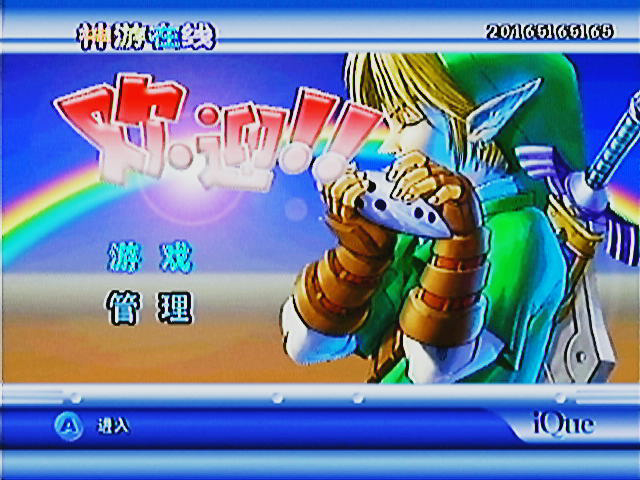
This main menu changed on subsequent boots. I thought at first the selection of background image was related to the last game I played, but it turned out to just be random.
After a little more wiggling, I was able to get a stable enough picture that I could play the games without getting the cables to go loose every time I tilted the joystick a bit. Here is the options menu, which I also don’t understand:
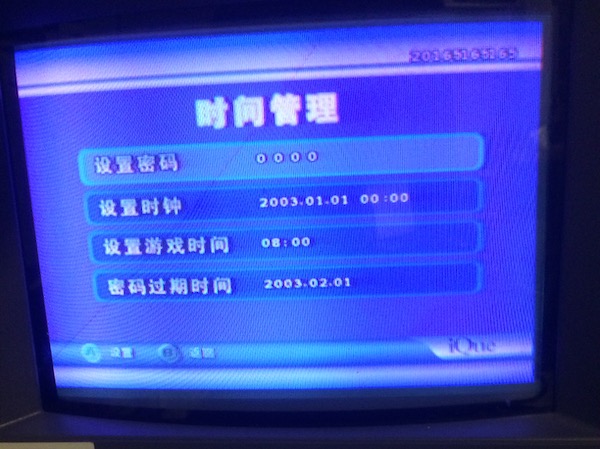
According to Wikipedia, the options here are:
- PIN lockout (for parents);
- Set RTC
- Set a limit on how long you can play games (again, for parents);
- Password expiration date
It looks like there is an option for setting a real-time clock. Hopefully this doesn’t have a battery inside it, because I would hate to have to dismantle the controller to get that battery out. The RTC is probably for Animal Forest.
When you go to the top option on the main menu, it takes you to this game select menu. For some reason, I had believed that the iQue only held one game at a time on its storage packs, but it clearly can hold at least five. I’m not sure if the number in the corner indicates some kind of ‘free space,’ because Google Translate can’t figure out what’s going on with anything displayed on my war-torn Sony PVM.
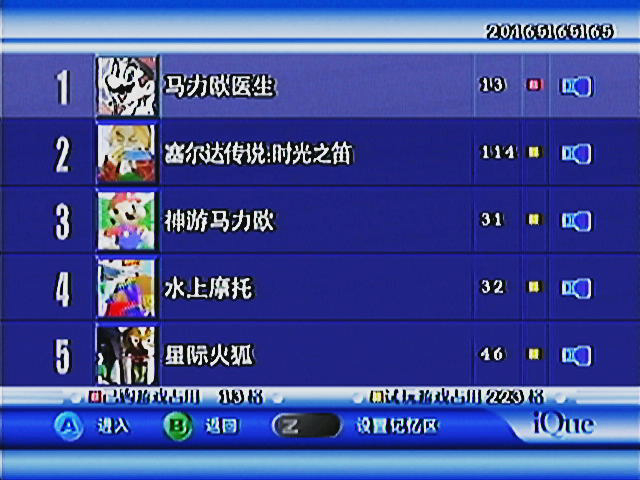
These five games are, from top to bottom:
- Dr. Mario 64
- Zelda: Ocarina of Time
- Mario 64
- Wave Race 64
- Star Fox 64 (Slippy’s voice is no more tolerable in Mandarin)
Here, I was still trying to figure out how to work my capture rig when I took this video of Star Fox 64, so part of the picture has been cropped, but you can get the idea. I swear I wasn’t trying to shoot Slippy, it just happened.
I don’t know if these are the defaults you get with the machine, but this is a pretty good cross-section of games. Some of the games make you decompress them before you can play:
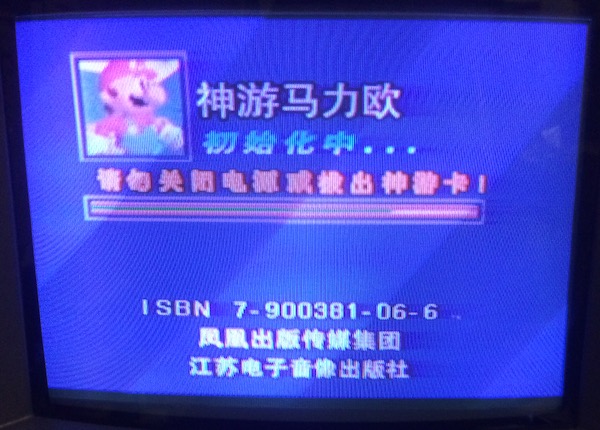
I am sort of surprised that an ISBN is displayed during load. I had always figured that ISBNs were just for books!
Oddly, Zelda 64, which I’d assume to be the biggest cart of the bunch, loads almost instantly without going to the same decompression screen. Maybe it is in some kind of prioritized storage slot on the machine, or has been modified so that it decompresses on the fly with bank switching.
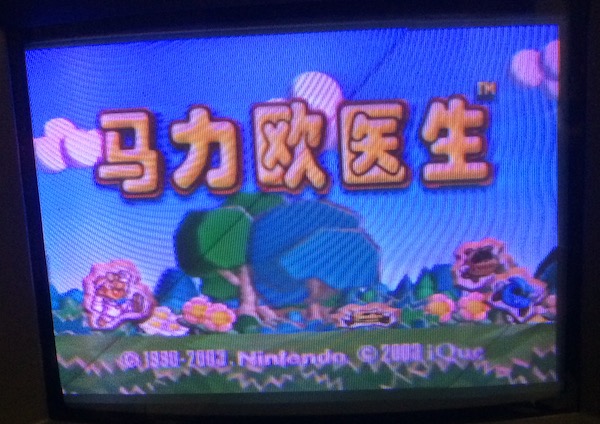
I ended up playing a lot of Dr. Mario that night. All the buttons on the control pad seem to work, and the joystick is really crisp. I wish the regular Nintendo 64 pads had been this good out of the factory, much less nearly 17 years later. However, something about the throw or the positioning of the analogue stick is off, and all my muscle memory is shot. Either that, or I’ve just completely lost the ability to play these games smoothly.
Once you start a game, pushing the “on/off” button brings you back to the main menu. Pushing the on/off button again turns the machine off, but it feels like you have to hold it a little bit too long and not so long that the machine restarts. It’s sort of janky, and based on the great condition of the rest of the machine, I’m not sure that it is from wear and tear.
Localization
There’s the occasional texture change on the games, possibly to encourage the Chinese government not to look upon this as a foreign Nintendo so much as a friendly neighbourhood iQue. The background behind Mario’s head on the title screen of Mario 64 is different, stating “iQue” instead of the Super Mario 64 logo.
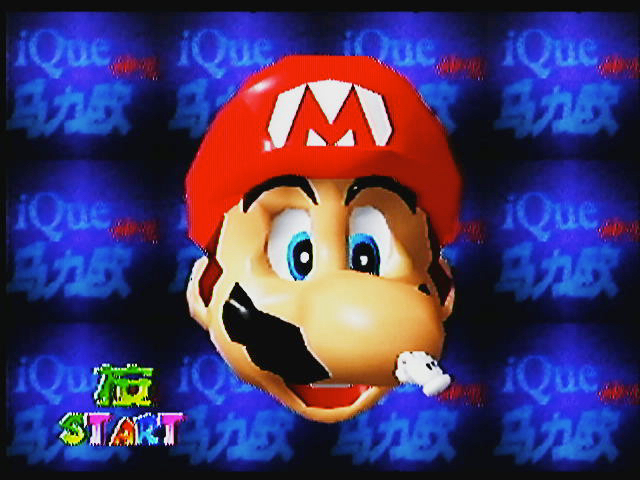
Everything seems to play about the same. Although I’m not counting frames, the gameplay might even be a little smoother than the original N64 version.
Mario is as slothful as ever. Gets one star and then that’s it for the day.
A very cool little gadget, even if it is a little newer than I’m used to. I hope soon the community can figure out how to put Animal Crossing on it. Then I’ll have a reason to practice writing collection letters in Mandarin to Tom Nook’s debtors. 你应该付汤姆·努克!
Thank you again to re-enthused for holding the contest. I think there might be another one coming up soon as well, as they have just passed 1500 subscribers (in basically no time flat.)